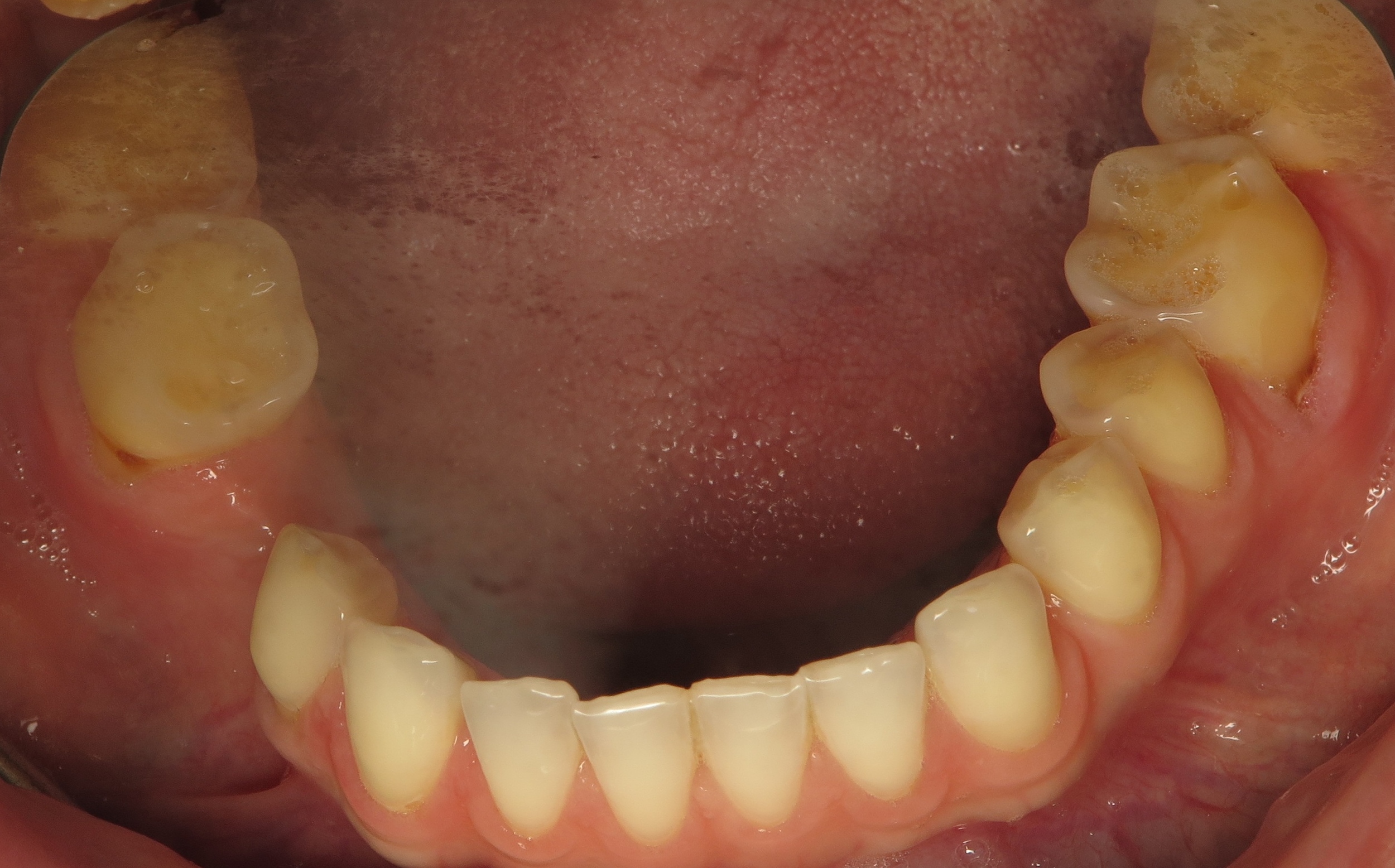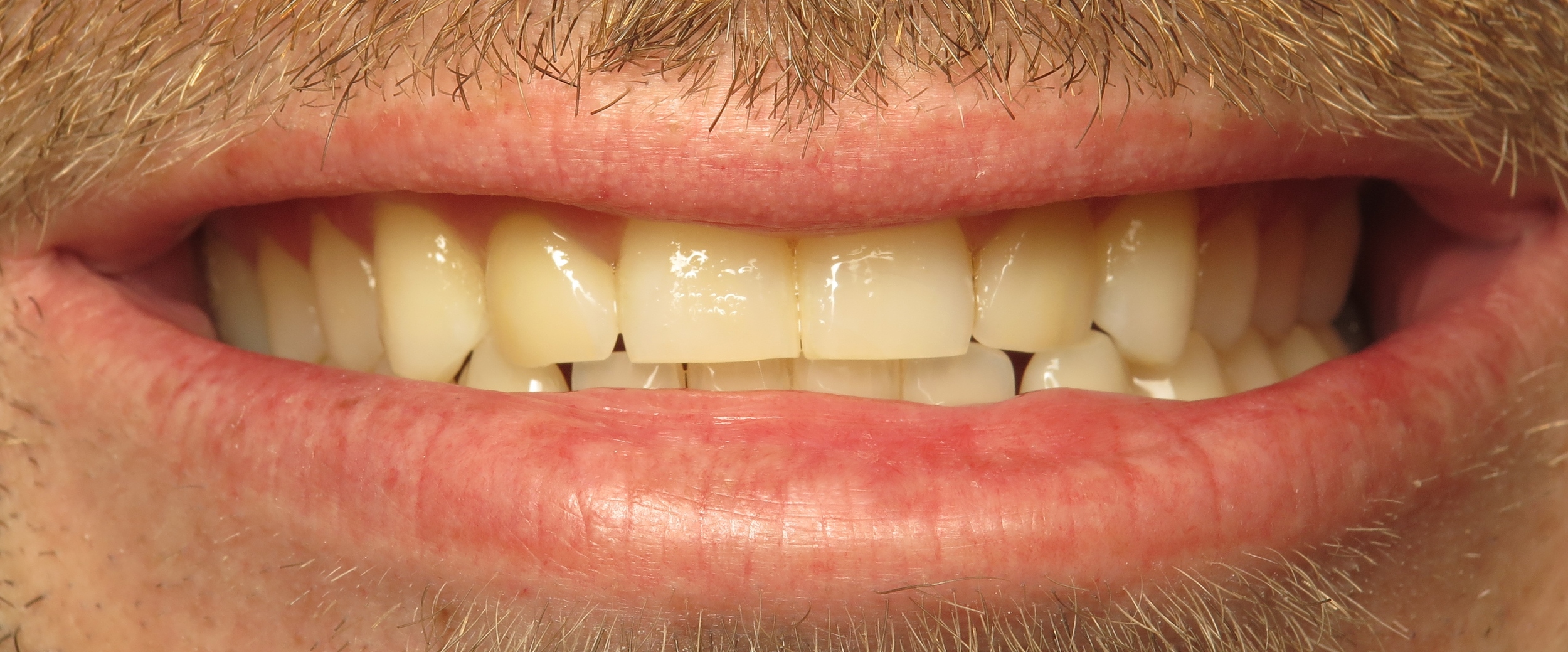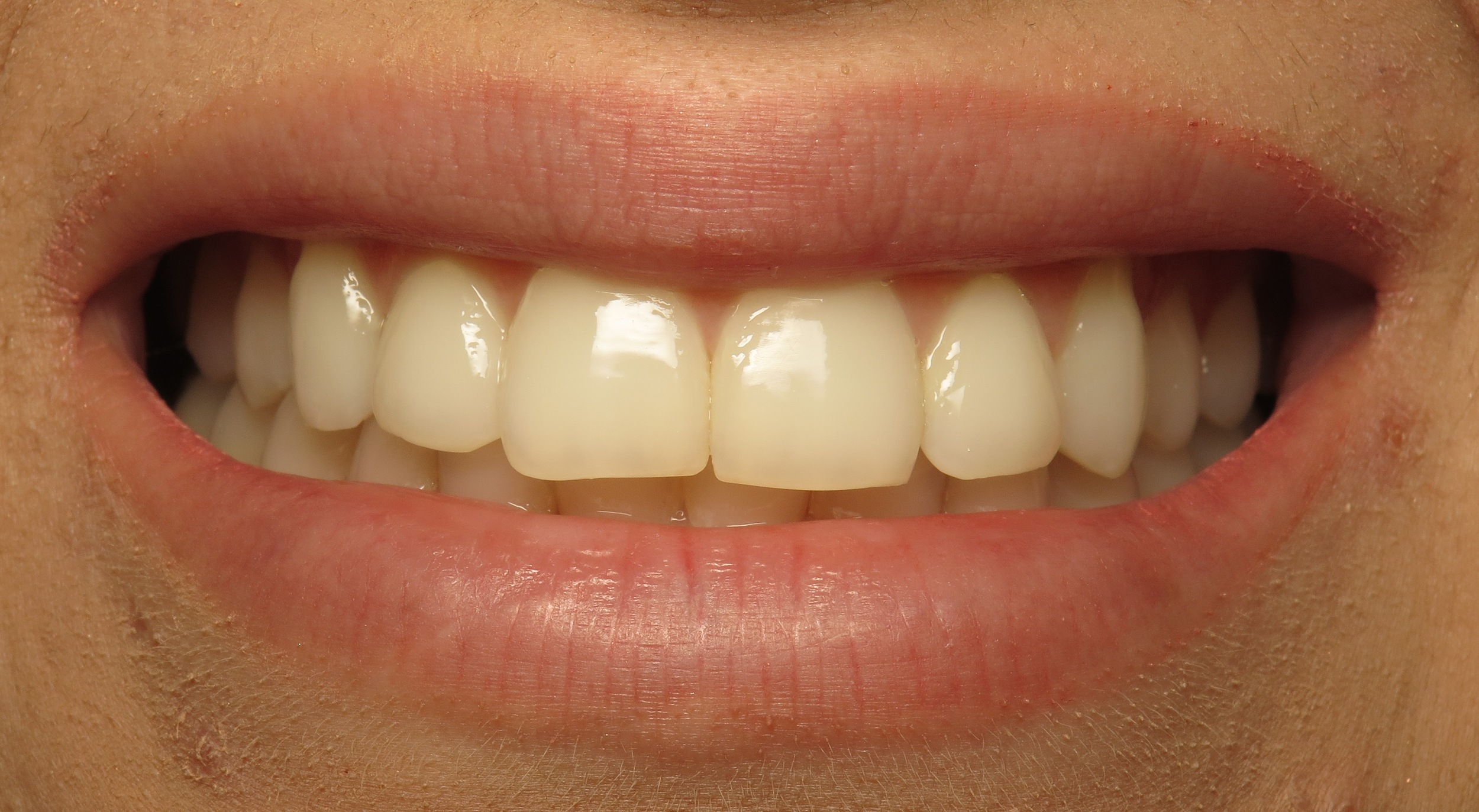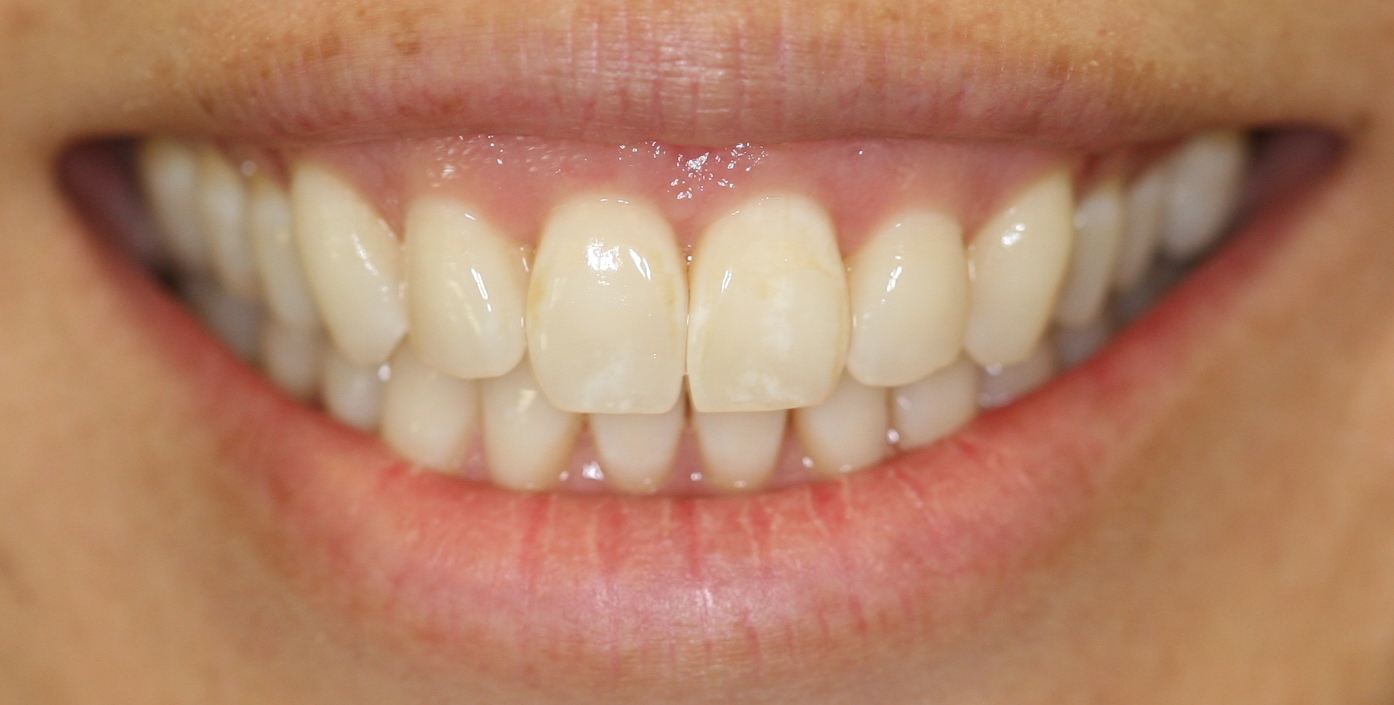Today's patient came to us with porcelain and metal crowns on all of their lower teeth. With time, these restorations had become chipped and worn, making it obvious that they were not natural teeth. Additionally, gum recession had revealed the dark metal collars around these crowns, creating an obvious transition from enamel to porcelain. Finally, porcelain and metal crowns are inherently opaque (do not transmit light) to block out the inner metal layer. This contrasts harshly with the natural translucency of dental enamel and makes the teeth look "old" or yellow.
After considering the many options, Dr. Kari Ann Hong and the patient decided to replace the existing crowns with new Emax lithium disilicate restorations. Emax provides increased durability over porcelain and metal crowns with better esthetics and more design possibilities. The results speak for themselves! The new crowns have a much more natural shape and contouring, while the shade and translucency better matches natural enamel. Additionally, the increased wear resistance will help ensure these teeth for years to come. If you would like to know more about dental crowns, fillings and other cosmetic procedures, please give our office a call!






































